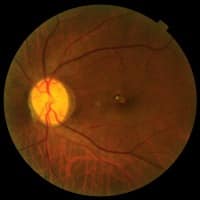A recent study has shown that the onset of age-related macular degeneration (AMD) can be slowed by transitioning from a high-glycemic diet to one that is low-glycemic (mouse model). As an example, swapping out white bread for whole grain bread. High-glycemic foods spur the rapid release of sugar into the bloodstream compared to low-glycemic foods. The study was performed by academicians at Tufts University’s Jean Mayer USDA Human Nutrition Research Center. Results of the study were recently published in PNAS.
Why the Study Matters
This study is important as it highlights potential AMD biomarkers. These biomarkers can be used to estimate when an individual is at risk for AMD. AMD is the top cause of vision loss in individuals over the age of 50. It begins with blurred vision and gradually leads to incurable vision loss.
Study Details
The research team used an aged mouse model to randomize nearly 60 mice in two groups. The first group was made up of 19 mice who were fed low-glycemic food. The second group was made up of 40 mice who consumed a high-glycemic diet. The only difference between the diets was the source of carbohydrates. This source varied in terms of amylopectin and amylose ratios. Both are starches. The low-glycemic starch contained 70 percent amylose along with 30 percent amylopectin. The high-glycemic starch was completely made up of amylopectin. Following six months, the high-glycemic mice either stayed on the diet or were provided with a low-glycemic diet.
Results
The research team determined the high-glycemic diet spurred the onset of several AMD features such as the loss of cell functionality at the rear of the eye, referred to as retinal pigmented epithelial atrophy. The cells that capture light (photoreceptors) also ceased to function as designed. These flaws are precursors to AMD. Yet the mice on the low-glycemic diet did not experience such AMD features.
It is interesting to note that moving from the high-glycemic diet to the low-glycemic diet halted retina damage. This finding surprised the research team. In fact, the mice that were switched from high to low-glycemic diets halfway through the study had retinas that were exactly the same as the mice fed low-glycemic diets across the study’s entirety. The researchers did not expect such a dietary alteration to repair the damage in such an effective manner. It is clear that segueing from a high-glycemic diet to one that is low-glycemic is helpful for eye health in individuals who are likely to develop AMD.
Biomarkers
The research team pinpointed biomarkers that signal the onset of AMD features. These biomarkers help predict which individuals will be saddled with the disease. The biomarkers known as “advanced glycation end products” or AGE, generate when sugar metabolites interact with proteins. AGEs are often a factor in the onset of degenerative diseases like AMD.
Other examples of biomarkers include C-3 carnitine and oxidized fats. The oxidation of fat causes fat degradation within cell membranes, ultimately leading to cell damage. The low-glycemic diet minimized the accumulation of AGEs as well as the oxidation of long-chain polyunsaturated fats.
The research team also found that high levels of serotonin and C3-carnitine within the blood are tied to low-glycemic diets and fewer AMD features. C3-carnitine serves an important role in metabolizing fatty acid within cells. It is found in an array of low-glycemic foods like vegetables and whole wheat. All in all, the findings suggest alterations in the metabolism tied to the factors outlined above play an important part in the onset of AMD features.




